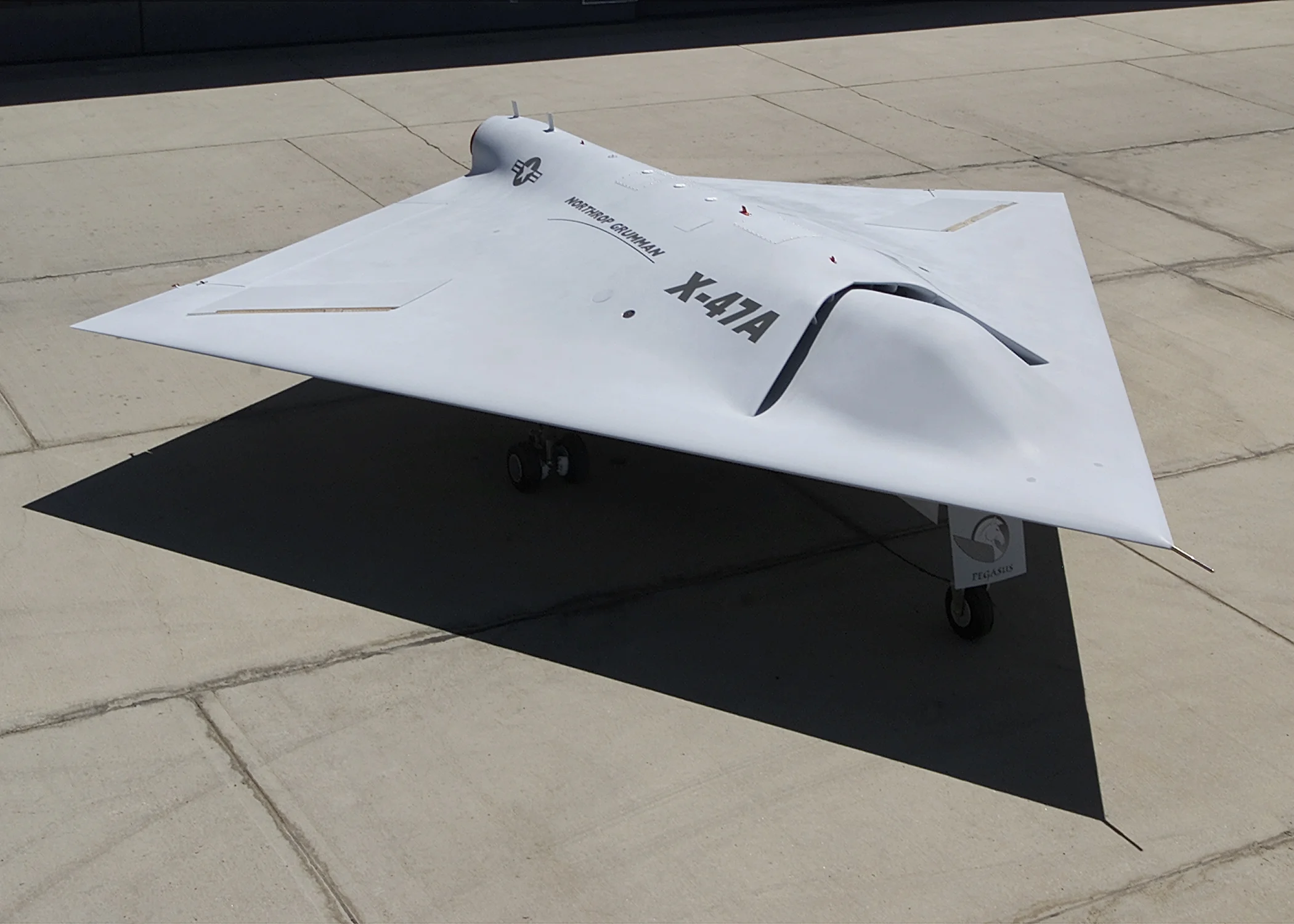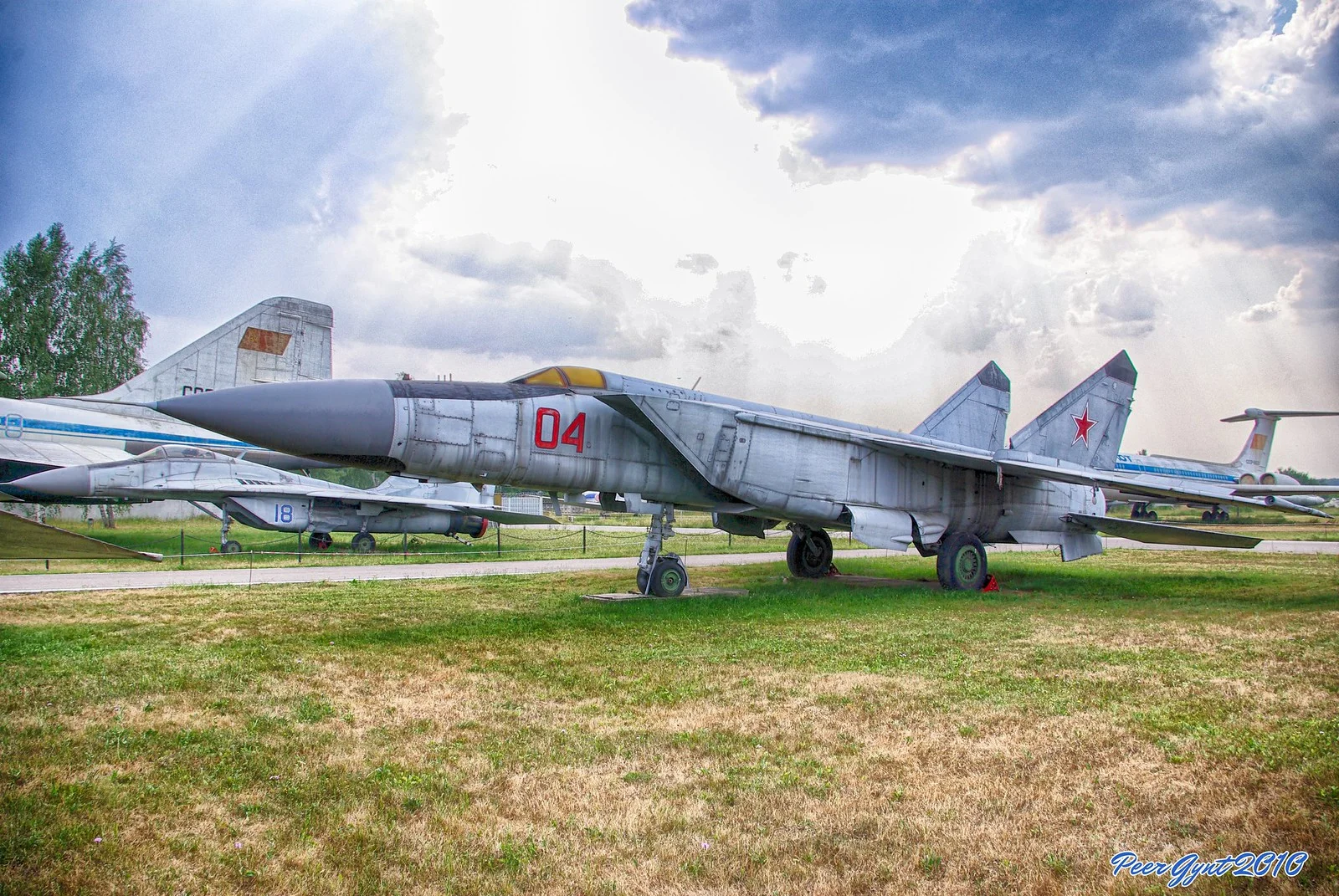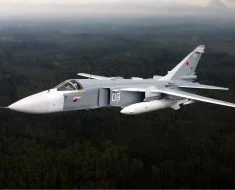Whilst the Harrier was not the first jet-powered V/STOL (Vertical/Short Take Off and Landing) aircraft ever built it is arguably the best.
Despite being introduced in 1969, it is still in service with several forces around the world thanks to its devasting ground attack capabilities and all round performance – a testament to its excellent design. It is only now starting to be replaced by the F-35B Lightning II.
But to understand the Harrier, we need to look back at the Hawker P.1127 / Kestrel.

Contents
P.1127 / Kestrel
11 years before the Harrier was introduced into service, development of the P.1127 began. It was built around an engine – the Bristol Engine Company Pegasus. This short and stubby unit had its first run-up in 1959 and impressed with high power output.
With a dry weight of less than 1,800 kg and a thrust output of 11,300 pounds it was extremely impressive for 63 years ago.
Read More: Myasishchev M-4 – The Soviet Bomber with 4 Decades of Service
It had been designed with V/STOL in mind and had four exits for the exhaust. Hawker Siddeley had taken great interest in this new engine, and designed the P.1127 around it.
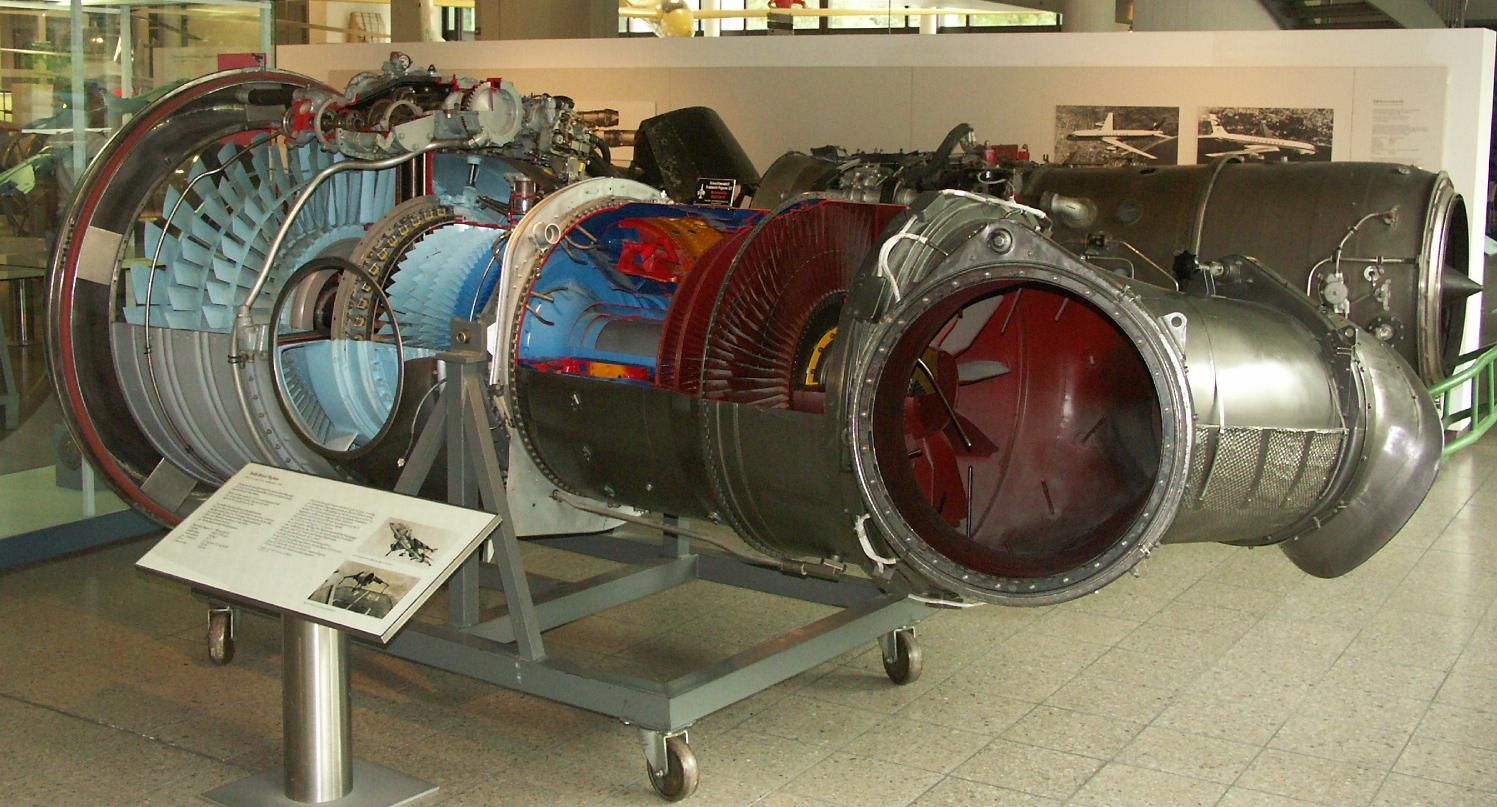
The P.1127 had four rotating nozzles, two on either side of the fuselage. Going from 0 degrees to just past 90, pointing the nozzles directly downward would enable the new craft to take to the sky vertically using just the raw power of the Pegasus engine.
To aid control in flight there were auxiliary nozzles placed in the nose, wingtips and tail. These would ensure that the pilot would be able to steer the aircraft whilst hovering.
An aircraft that could take off and land vertically would not need a runway. Even assault ships could now utilise these types of aircraft which was of particular interest to the Navy.
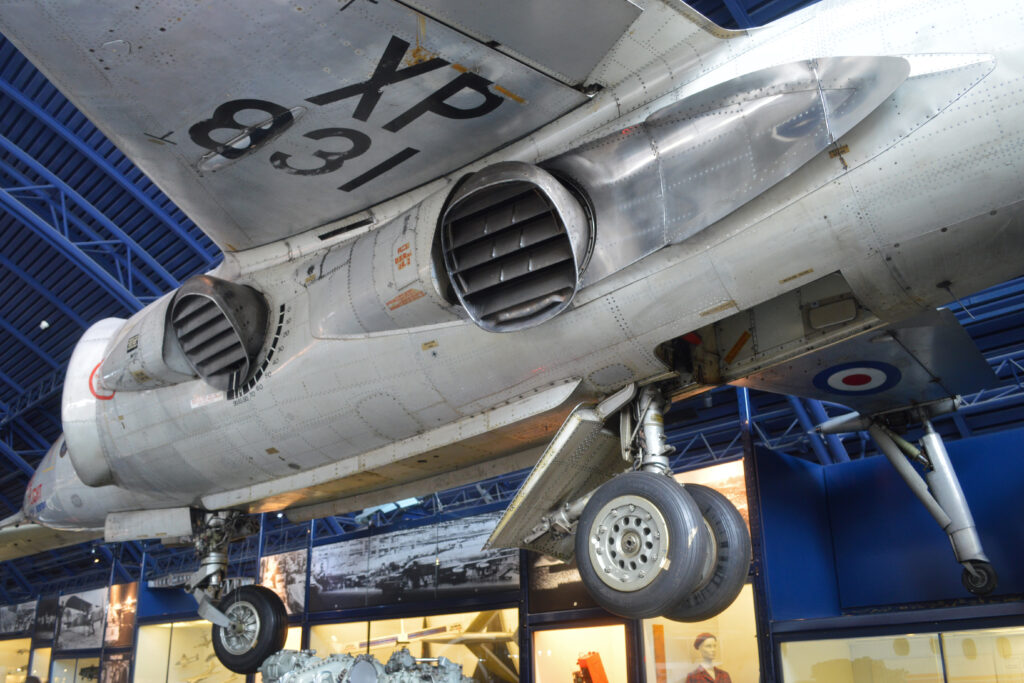
In the case of enemies destroying airfields or nuclear war, a V/STOL vehicle could take off from an unprepared surface, perform the required mission and then land for re-armament.
It would be possible to catch enemies off guard as aircraft could take off from different locations, keeping them guessing where the next strike would come from.
And less than a year after the Pegasus’s first run up, the P.1127 took flight for the first time in October 1960.
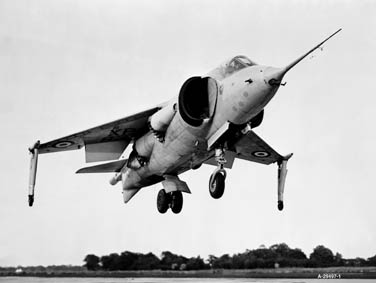
Initially, it was tethered to the ground for vertical take-off testing. It was quickly realised that even with a barebones airframe, the Pegasus would start to overheat after just a few minutes at maximum power. But, this was enough for the pilots to start to get to grips with the aircraft’s controls.
Testing progressed fast and not even a month later the first untethered hover was achieved.
This was the bleeding edge of technology. It came with large risks. This was realised at the Paris airshow in 1963. The P.1127 was shown off to the crowds, but dirt caused issues with the nozzle control system causing the first prototype aircraft to crash.

Due to the limitations of the new aircraft in terms of carrying capacity and speed, the RAF was not interested in this new V/STOL design and believed it would not be able to perform adequately enough for their needs – how wrong they were!
However, Hawker Siddeley pressed on and managed to recieve enough funding to produce nine FGA.1 Kestrels after West Germany and the US contributed to the costs after seeing potential in the programme.
Read More: Tupolev Tu-144 – The Soviet Concorde
The Kestrel was an improved version of the P.1127 with more powerful engines, a larger tail and fully swept wings.
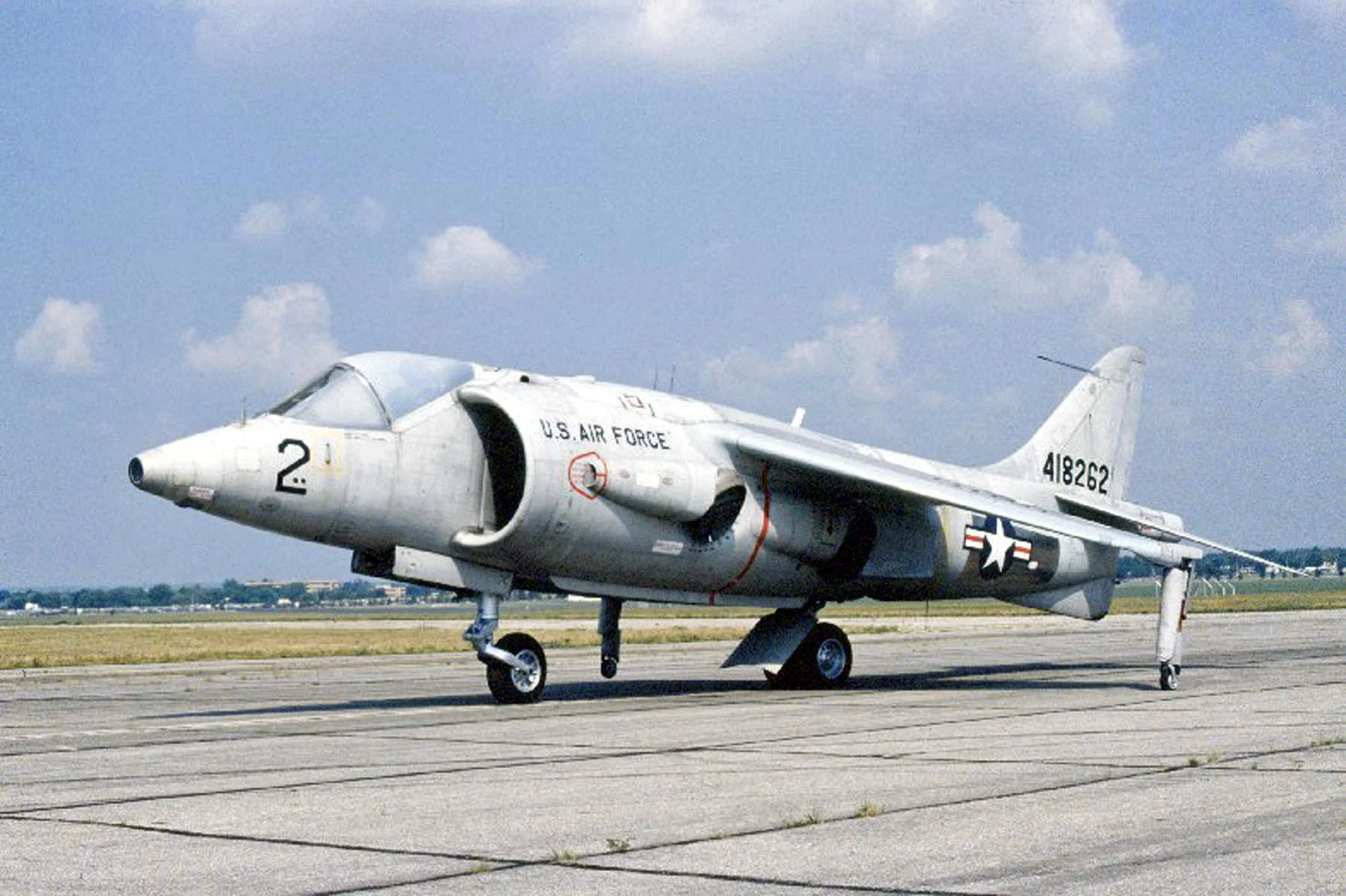
All three nations tested these aircraft and a total of 960 sorties had been flown. The performance of the Kestrel was a serious step up from the P.1127 and impressed the RAF and the USMC.
By 1967, despite an uncertain future, the RAF placed an order for 60 aircraft, designated Harrier GR.1 after the bird of prey. The US quickly followed suit and ordered their own.
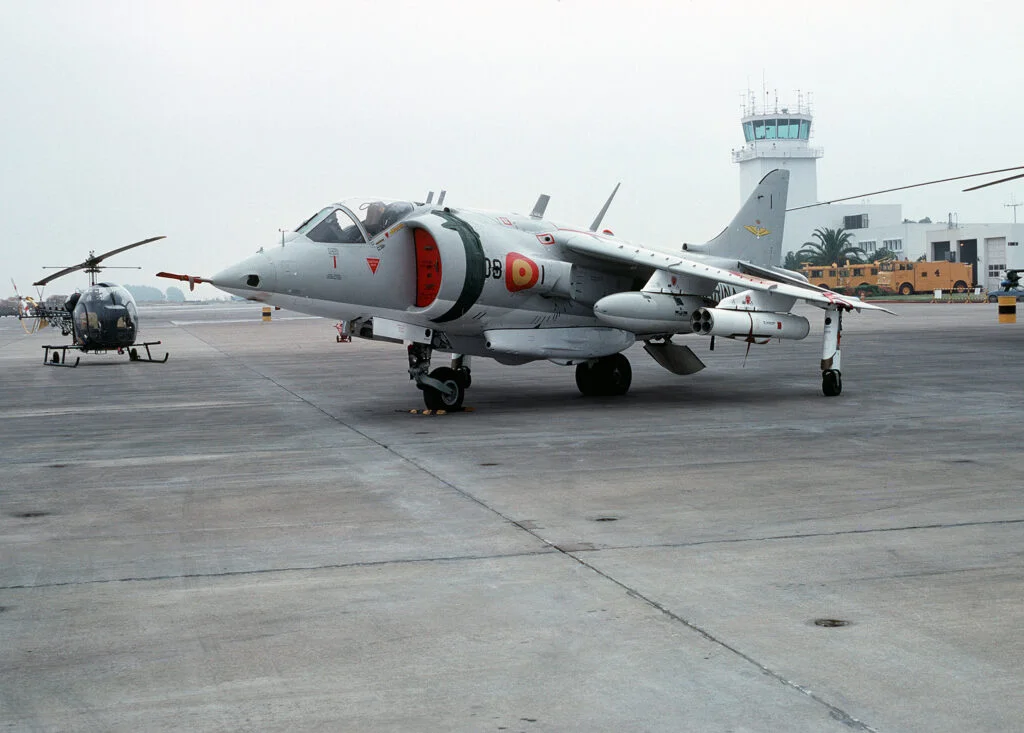
The Harrier
The Harrier had come quite a long way from the P.1127. Major design revisions were the key to making the P.1127 into an aircraft that would be effective for the military.
Most importantly, a more powerful Pegasus 11 Mk 101 engine was used, which produced over 10,000 pounds more thrust than the Kestrel! Being able to take off on short runways with a combat load was essential to the viability of the Harrier. In contrast, earlier models struggled or overheated. This new engine enabled exactly what was required.
Even with all this new power, the Harrier was still very much a transonic aircraft. She was able to break past Mach 1 in a dive, but would top out at 731 mph in level flight.
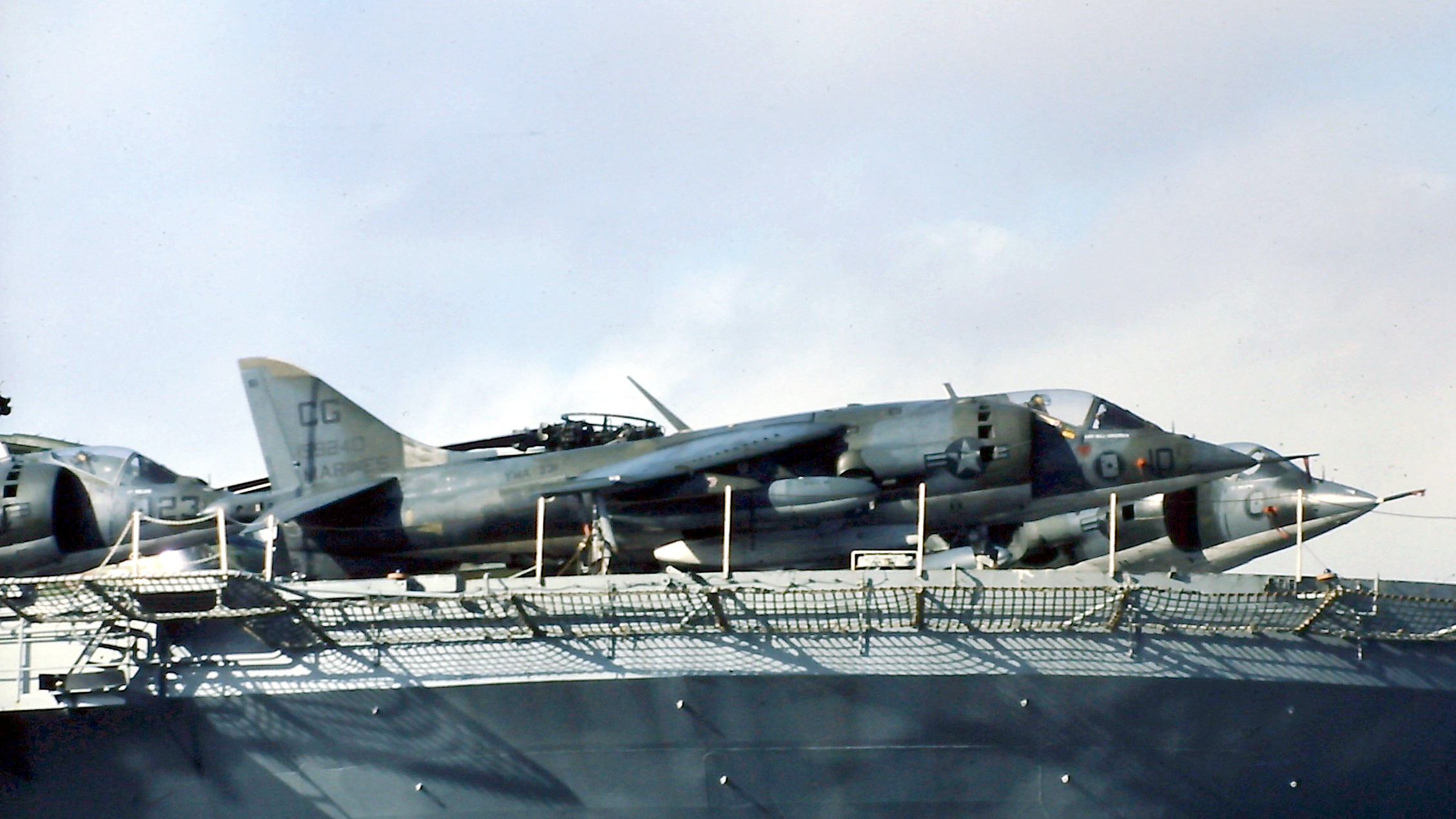
In 1969 the first Harrier GR.1s were introduced into RAF service. The aircraft was almost identical for the US, but was designated AV-8A and deliveries commenced in 1971.
Even with the enlarged fuselage, the GR.1/GR.3/AV-8A was relatively small, coming in at a length of only 14.4 metres and a wing span of 7.7 metres.
But despite its small stature, the Harrier could carry a wide variety of armament, from dumb bombs to air-to-air missiles and even anti-ship weapons. A pair of 30mm ADEN cannons for close-up work were mounted on the bottom of the fuselage.
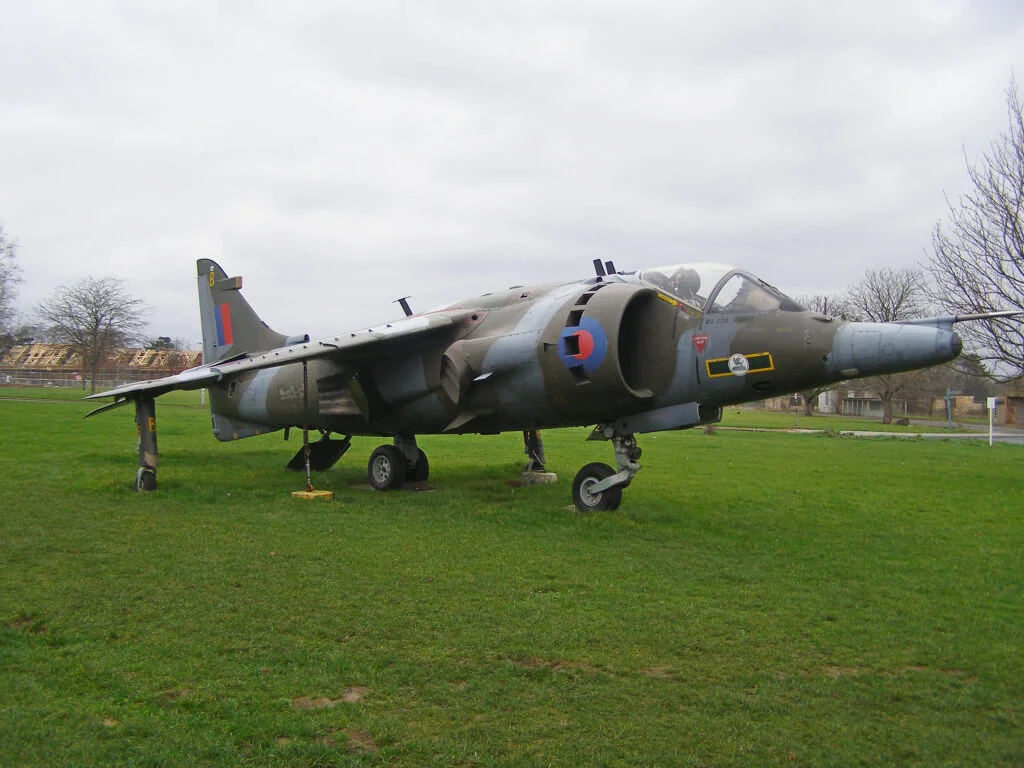
The Royal Navy took interest in this new aircraft as the ability to operate from smaller carriers would be invaluable and about 10 years after introduction with the RAF, the Fleet Air Arm started taking delivery of its new Sea Harrier.
Most notably the Sea Harrier played an extremely important role in the Falklands War of 1982 flying from HMS Invincible and HMS Hermes.
Sea Harriers and GR.3s were used in the conflict to great effect. Despite being thousands of miles away from the UK, they were able to fend off the Argentinian air and ground forces and provide much-needed ground cover for British infantry.

Argentina lost over 20 aircraft to Harriers, thanks to the formidable AIM-9L air-to-air missile. However, 10 Harriers were lost, but none of them were due to the Argentinian air force. Despite being designed as a ground attack aircraft, it had proved to be capable all rounder.
Harrier II
The US had been impressed by the Harrier and McDonnell Douglas has been working on an improved version as early as 1973. They required help from Hawker Siddeley, who put huge efforts into refining and improving the Pegasus engine even further.
Read More: The Ball Turret – a Vertigo Sufferer’s Nightmare
In typical British fashion, Hawker lost backing from the government and withdrew from the project, only for BAe (British Aerospace) to join back again a few years later after deciding the Harrier II would be a worthy upgrade.
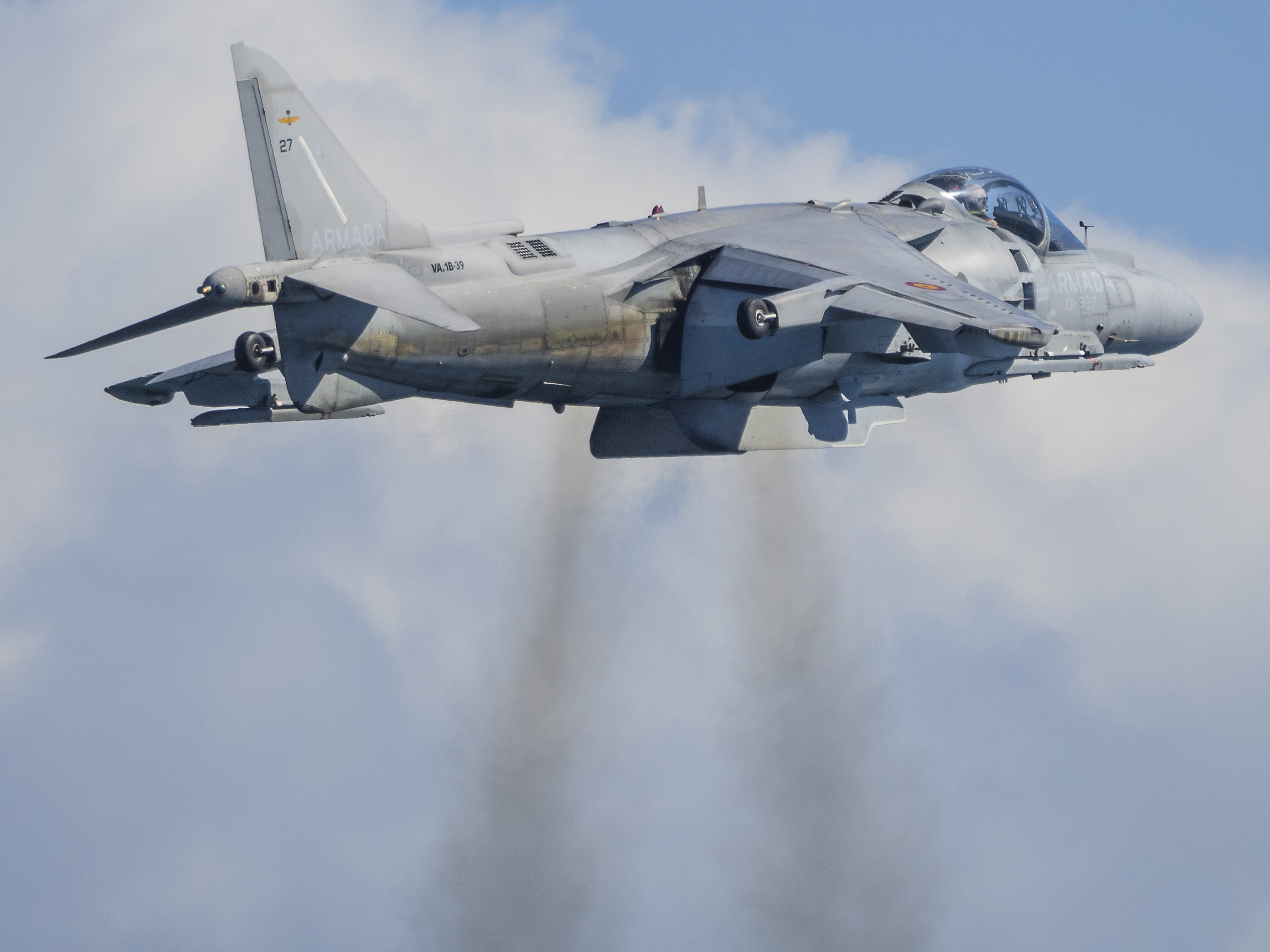
However, despite this in 1987 the AV-8B was placed into service with the USMC as well as the RAF in 1989 designated the GR.5.
The upgrade was significant. The wing design was changed and became much larger, now reaching a 9.25 m span. Overall weight was reduced, the payload was increased and massive electronic upgrades including a HUD (Head Up Display).
The RAF and Fleet Air Arms usage of the Harrier II was extensive, but once again due to politics was retired from service in 2011 without any replacement. It is only recently that this hole in capability has been filled by the new F-35B Lightning II.
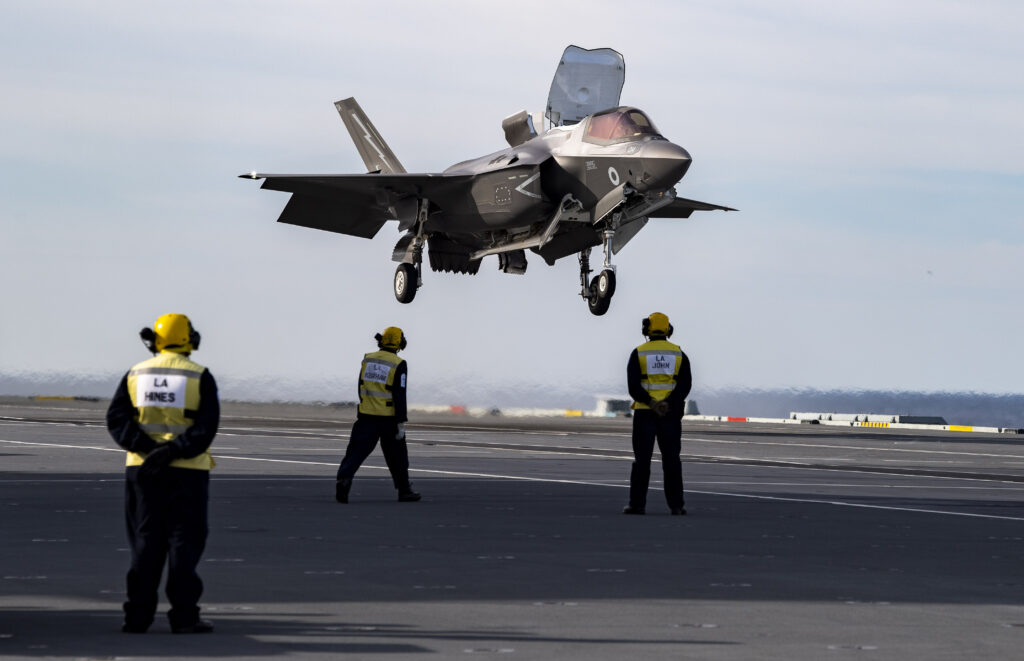
The entire British fleet of 72 Harrier IIs was sold to the USMC for £116 million. All of these airframes will be used as a source of spare parts to keep the AV-8Bs in the skies well into the future.
Italy and Spain had taken notice of the Harrier II programme and indicated their interest. This aircraft had now proven itself in the conflicts prior and this upgrade was significantly improved over the original Harrier.
Spain was the first major customer of the AV-8B, designated the EAV-8B Matador (E for Español). They had previously been using the earlier AV-8S and first placed the order for 12 new Harrier IIs in 1983 of which all deliveries were completed by 1988.

The Spanish Navy used these new aircraft as part of the Alpha Carrier Air Group. They loved the aircraft and ordered eight of the newest AV-8B+ model in 1993. Much like the UK, the Spanish are now looking to replace the Matador with the F-35 but are unable to do so due to lack of funding.
Italy was another major operator and placed an order for 16 AV-8B+ models in 1989 and they were delivered between 1991 and 1995.
All of these aircraft were destined to operate from the Italian Navy’s aircraft and helicopter carriers. By 1999 these newly aquired aircraft had seen combat in Kosovo where they flew with other NATO aircraft dropping laser guided weapons.
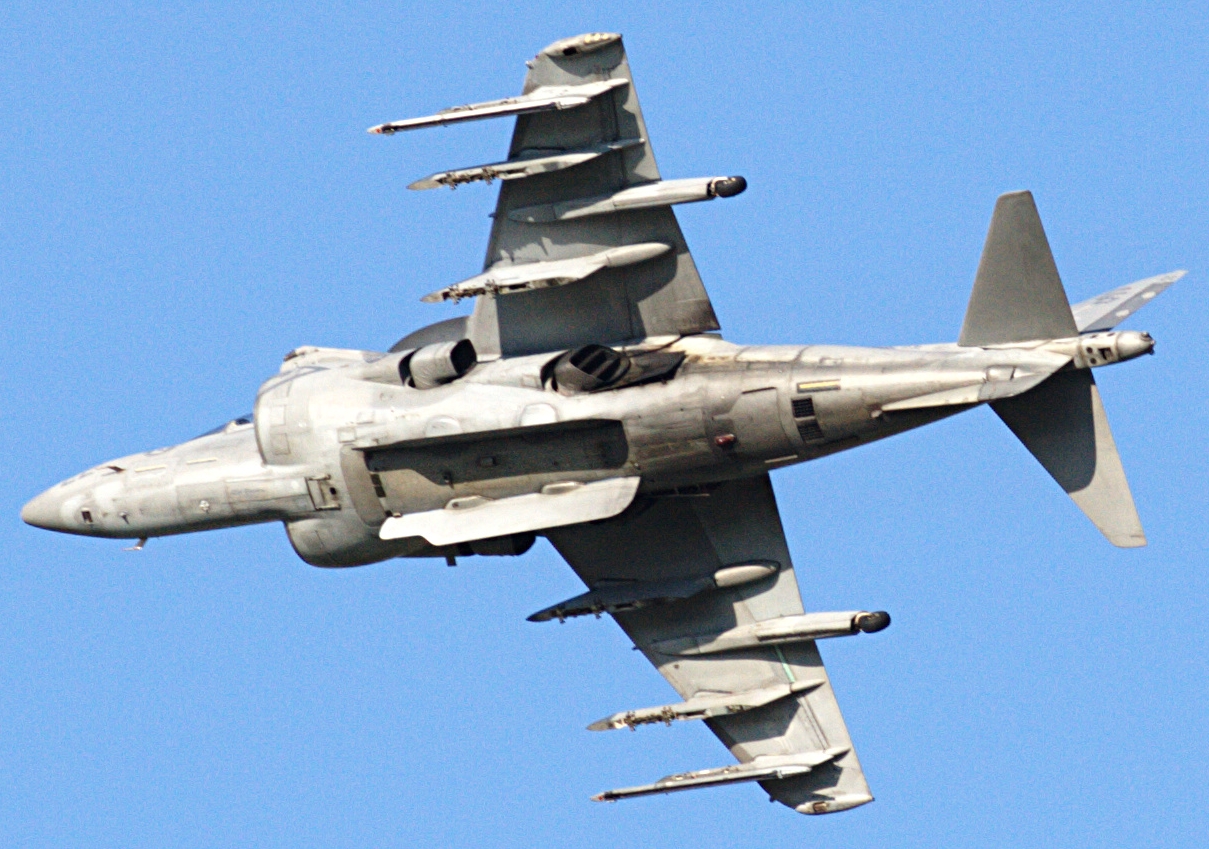
Italy is now also looking at replacing its fleet of AV-8Bs with the new F-35B Lightning II. This is still ongoing and for the moment the AV-8 lives on within the Italian Navy.
Conclusion
The Harrier was notoriously difficult to fly and put heavy load on the pilots that served on her. However, both the Harrier and Harrier II recieve almost universal praise due to the versitility and flexiblity of the platform.
Read More: Mil V-12 – The Biggest Helicopter Ever
Although not the fastest bird in the skies, she could excel at almost every task. The Harrier proved herself time and time again and has been used in almost every major conflict since its introduction.
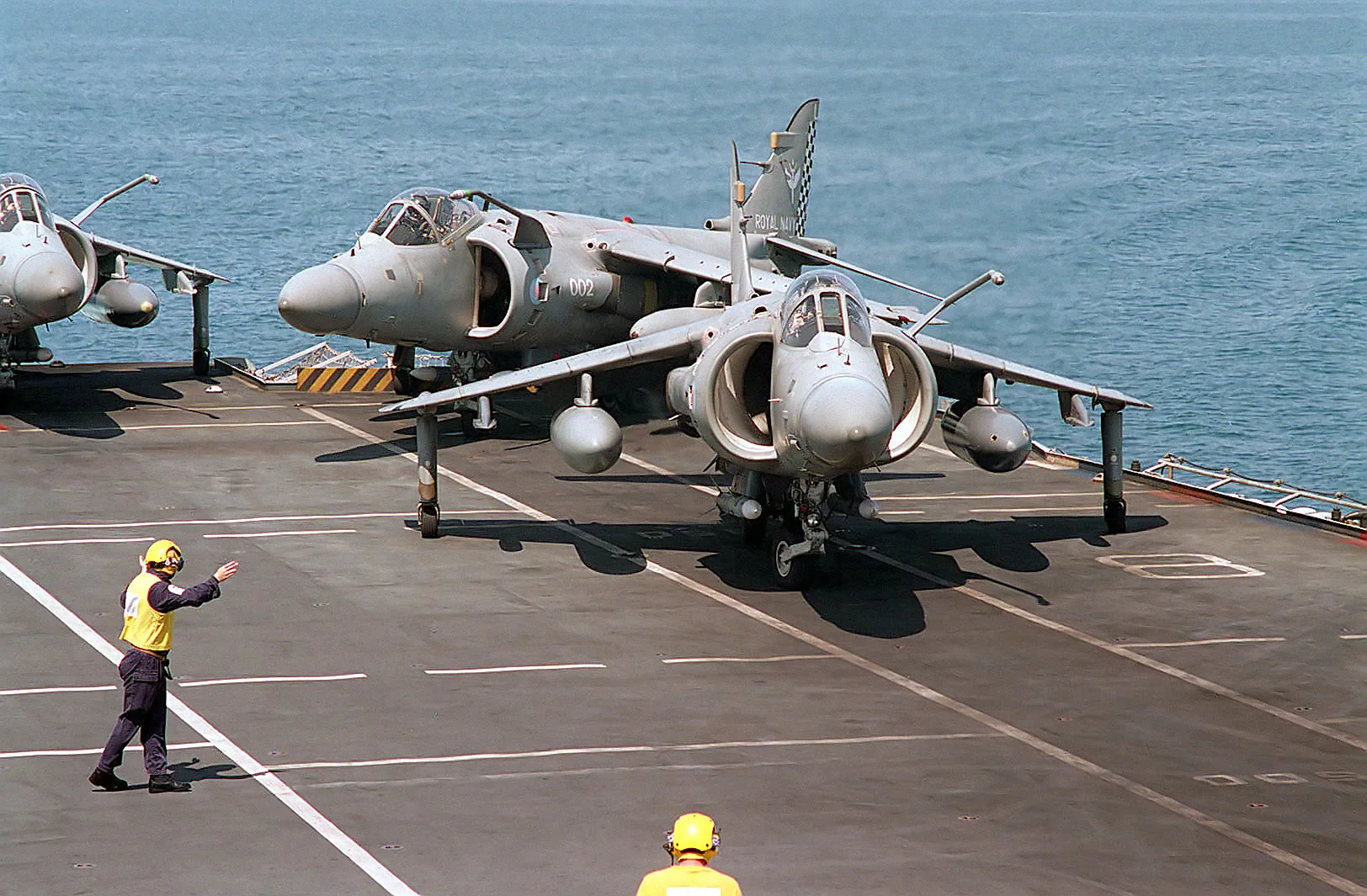
A testament to how good this aircraft was is that she is still in service with the USMC, Italian and Spanish Navies, some 50 years after its first introduction.
Not bad for a small subsonic ground attack aircraft.
If you like this article, then please follow us on Facebook and Instagram.
Specifications
Harrier II
- Crew: 1
- Length: 46 ft 4 in (14.12 m)
- Wingspan: 30 ft 4 in (9.25 m)
- Height: 11 ft 8 in (3.56 m)
- Wing area: 243 sq ft (22.6 m2)
- Empty weight: 12,500 lb (5,670 kg)
- Max takeoff weight: 31,000 lb (14,061 kg)
- Powerplant: 1 × Rolls-Royce Pegasus Mk. 105 turbofan engine, 21,750 lbf (96.7 kN) thrust with water injection
- Maximum speed: 575 kn (662 mph, 1,065 km/h)
- Combat range: 300 nmi (350 mi, 560 km)
- Service ceiling: 50,000 ft (15,000 m)
- Rate of climb: 14,715 ft/min (74.75 m/s)




